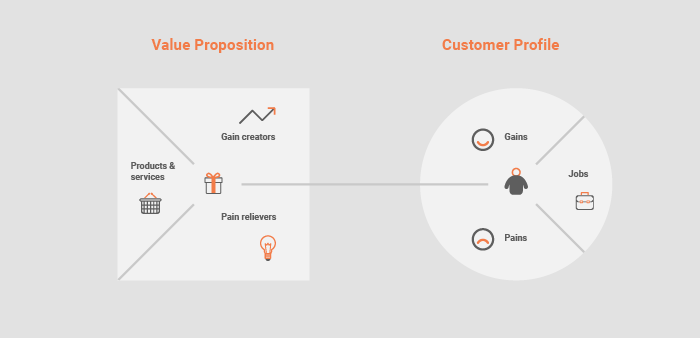How to Create a Unique Value Proposition: A Step-by-Step Guide
Your company’s value proposition articulates why customers should work with or buy from your company over a competitor. But exactly how does it do that? And how do you develop a value proposition that’s compelling enough to make an impact and increase conversion rates?
In this article, we’ll cover what a value proposition is, why it’s important, and how to create a strong value proposition statement.
What Is a Value Proposition?
A value proposition is a statement that communicates why customers should choose your products or services.
More than just a product description, an effective value proposition explains how the product or service you provide creates value in a customer’s life.
The best value propositions are clear, concise, and to the point. And they should be written in a language that customers will easily understand and resonate with. After all, a value proposition is your promise to customers of the value they are going to receive from your business. If they don’t understand your promise, how are they going to trust you?
Why Is It Important to Have a Great Value Proposition?

As illustrated with the LIFT Model by WiderFunnel, there are six key conversion factors to consider when evaluating the digital experiences you’re providing customers.
The LIFT Model draws on a few factors including clarity, relevance, distraction, urgency, and anxiety. But at the heart of the model is the value proposition.
Having a strong value proposition is essential for any business as it highlights key characteristics that separate you from competitors. If your customers know what separates you from the rest, it’s much easier for them to trust you. This, in turn, makes it easier for you to close a sale more consistently.
How Do You Develop a Great Value Proposition?
It’s important to create a Value Proposition Canvas before your write your value proposition statement.
The Value Proposition Canvas is a visual tool created by Alex Osterwalder. Use this tool to help you position your product or service around the needs and wants of your customers. Below is a step-by-step guide on how to make a Value Proposition Canvas:

Step 1: Create a customer profile to represent your target customer segment
It’s important to start with this section first so that the wants and needs of your customers can influence the overall canvas.
Look at these three areas:
Jobs to be done
What is the job your customer needs to complete? What is the problem they’re trying to solve with your product or service?
Think beyond functional tasks. Include social and emotional tasks.
Pain points
For each job, what are the negative experiences associated with getting that job done? What are the risks or undesired costs?
Group several jobs that may share similar pain points. You can also sort these in order of intensity.
Gains
What is your customer expecting to gain from using your product or service?
Use research to explain what your customers expect from your business to purchase your product.
Step 2: Create a value proposition map for your products and services
In this section, work out how to address your customer’s needs. In other words, describe what your business can offer to your customers.
There are three sectors to look at:
Products and services
List the products you make or the services you provide that will help your customer complete their functional, social or emotional jobs. Only include your products and services that will create the most gain and alleviate the most pains for your customers.
Rank these in order of how important they’re likely to be to the customer.
Pain relievers
How does your product or service help the customer overcome their pain points? How does it eliminate negative experiences, mitigate risks or reduce undesired costs?
Gain creators
What features do your products or services have that make the customer happy?
Consider the customer’s financial and social goals as well as their psychographics.
Step 3: Determine how your value proposition fits within the customer profile
In this step, determine how your value proposition fits within the customer profile. Use a ranking process to do this. Prioritise products and services based on how well they address the customer profile.
Elements of a Value Proposition
Now that you’ve completed the Value Proposition Canvas, you now have a framework for crafting your value proposition statement.
There are three main elements that you should include in your value proposition: the headline, the sub-headline, and a visual element.
Headline
The headline of your value proposition should articulate the main benefit the customer will gain from purchasing your product or service.
The headline can be as creative and catchy as you want it to be. But remember to keep it clear, concise, and to the point.
Sub-headline
The sub-headline or paragraph should flesh out the information you highlighted in the headline. Use this section to explain in detail what your company offers, who it serves, and why.
Visual element
Enhance your message with a video, infographic, or image to capture your audience’s attention.
You’re All Set!
Several factors can inform and influence a customer’s decision to engage with your business. A value proposition will help you understand your customers better, highlight what separates you from competitors, and articulate why customers should trust you. We hope that these tips and tactics guide you in crafting your unique value proposition!
The DGA team is composed of dedicated experts in digital conversion and strategy. With over 10 years of experience in digital marketing, our passion lies in helping businesses grow. Whether you want to learn more about your customers or need help developing a unique value proposition, we’ve got you covered.























